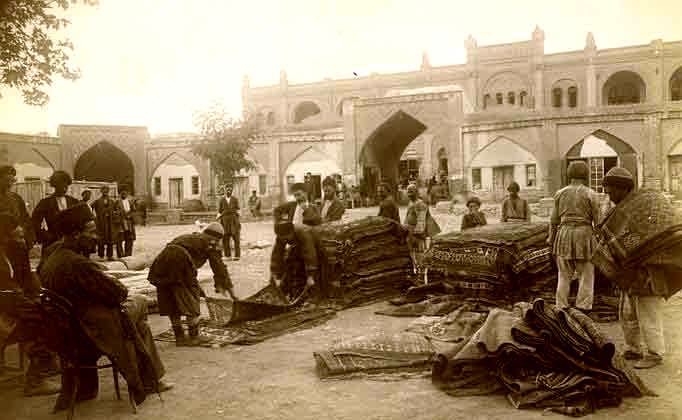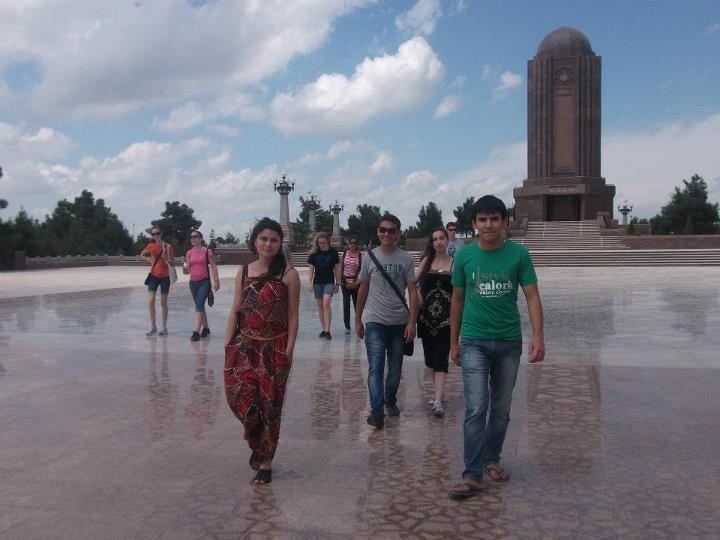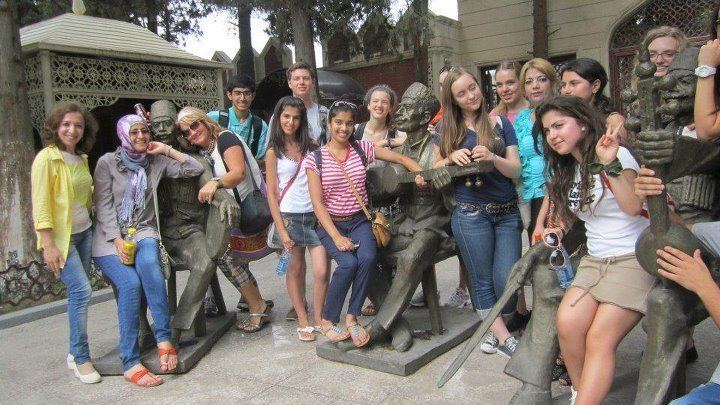Country Area 110 km2 | Mayor Elmar Valiyev Population 315,454 (2010) | |
Ganja (Azerbaijani: ) is Azerbaijans second-largest city with a population of just over 1.054.962. It was named Elisabethpol (Russian: , Yelizavetpol; ) in the Russian Empire period. The city regained its original name Ganja in 1920 during the first part of its incorporation into the Soviet Union. However, its name was changed again in 1935 to Kirovabad (Russian: ; ) and retained it throughout the later Soviet period from 1935. Finally in 1989, during Perestroika, the city regained the original name.
Contents
Map of Ganja, Azerbaijan
History
According to medieval Arabic sources, the city of Ganja was founded in 859-60 by Muhammad ibn Khalid ibn Yazid ibn Mazyad, the Arab governor of the region in the reign of the caliph al-Mutawakkil, and so-called because of a treasure unearthed there. According to the legend, the Arab governor had a dream where a voice told him that there was a treasure hidden under one of the three hills around the area where he camped. The voice told him to unearth it and use the money to found a city. He did so and informed the caliph about the money and the city. Caliph made Muhammad the hereditary governor of the city on a condition that he would give the money he found to the caliph.

Foundation of the city by Arabs is confirmed by the medieval Armenian historian Movses Kagankatvatsi, who mentions that the city of Ganja was founded in 846-47 in the canton of Arshakashen by the son of Khazr Patgos, “a furious and merciless man”.
Historically an important city of the South Caucasus, Ganja has been part of Sassanid empire, Great Seljuk Empire, Kingdom of Georgia, Atabegs of Azerbaijan, Khwarezmid Empire, Il-Khans, Timurids, Jalayirids, Qara Qoyunlu, Ak Koyunlu, the Safavid, the Afsharid, the Zand and the Qajar empires of Persia/Iran, but often ruled locally by the khans/dukes of the Ganja Khanate. Ganja is also the birthplace of the famous poet Nizami Ganjavi.
The people of Ganja experienced a temporary cultural decline after an earthquake in 1139, when the city was taken by king Demetrius I of Georgia and its gates taken as trophies which is still kept in Georgia, and again after the Mongol invasion in 1231. The city was revived after the Safavids came to power. City came under temporary occupation by the Ottomans between 1578–1606 and 1723-1735.
Geography
Economy
The economy of Ganja is partially agricultural, partially tourist based, with some industries in operation. Ore minerals extracted from nearby mines supply Ganjas metallurgical industries, which produces copper and alumina. There are porcelain, silk and footwear industries. Other industries process food, grapes and cotton from the surrounding farmlands.
Culture

The city has many amenities that offer a wide range of cultural activities, drawing both from a rich local dramatic portfolio and an international repertoire. The city is known for its famous metal handicrafts industry during the Middle Ages. The most notable works of that period includes Gates of Ganja and Ancient Ganja Gate.

Ganja Ethnographic and History Museum is the oldest museum in the city, with over 30,000 artifacts. The city is also home to Nizami Ganjavi Museum, which was built in 2014. The museum contains a research section, a library, a conference room, and corners for guests and tourists’ relaxation.
As of 2012, the city along with Baku and Lankaran participates in Earth Hour movement.
